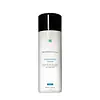What's inside
What's inside
 Key Ingredients
Key Ingredients

No key ingredients
 Benefits
Benefits

 Concerns
Concerns

No concerns
 Ingredients Side-by-side
Ingredients Side-by-side

Water
Skin ConditioningAloe Barbadensis Extract
Skin ConditioningVaccinium Myrtillus Bud Extract
AntioxidantHamamelis Virginiana Extract
AntiseborrhoeicPhenoxyethanol
PreservativeIsoceteth-20
EmulsifyingSaccharum Officinarum Extract
MoisturisingPropylene Glycol
HumectantMethylparaben
PreservativePvp
Emulsion StabilisingChlorphenesin
AntimicrobialCitrus Aurantium Dulcis Fruit Extract
MaskingCitrus Medica Limonum Peel Extract
EmollientGlycerin
HumectantBenzoic Acid
MaskingAcer Saccharum Extract
Skin ConditioningChamomilla Recutita Flower Extract
MaskingRosmarinus Officinalis Extract
AntimicrobialThymus Vulgaris Extract
PerfumingCitrus Aurantium Dulcis Oil
MaskingWater, Aloe Barbadensis Extract, Vaccinium Myrtillus Bud Extract, Hamamelis Virginiana Extract, Phenoxyethanol, Isoceteth-20, Saccharum Officinarum Extract, Propylene Glycol, Methylparaben, Pvp, Chlorphenesin, Citrus Aurantium Dulcis Fruit Extract, Citrus Medica Limonum Peel Extract, Glycerin, Benzoic Acid, Acer Saccharum Extract, Chamomilla Recutita Flower Extract, Rosmarinus Officinalis Extract, Thymus Vulgaris Extract, Citrus Aurantium Dulcis Oil
 Reviews
Reviews

Ingredients Explained
These ingredients are found in both products.
Ingredients higher up in an ingredient list are typically present in a larger amount.
Chamomilla Recutita Flower Extract comes from the Chamomile flower.
Chamomile is rich in antioxidants and has anti-inflammatory properties. Several compounds found in chamomile help with soothing, such as bisbolol.
Antioxidant components in chamomile make it an effective ingredient to help slow the signs of aging. Antioxidants help fight free-radical molecules, or molecules that may damage your skin.
Essential oils from chamomile have been found to improve wound healing due to its antimicrobial properties.
Ancient Greeks and Egyptians used Chamomile to treat skin redness and dryness. Chamomile has also been used to help treat stomach issues.
Learn more about Chamomilla Recutita Flower ExtractGlycerin is already naturally found in your skin. It helps moisturize and protect your skin.
A study from 2016 found glycerin to be more effective as a humectant than AHAs and hyaluronic acid.
As a humectant, it helps the skin stay hydrated by pulling moisture to your skin. The low molecular weight of glycerin allows it to pull moisture into the deeper layers of your skin.
Hydrated skin improves your skin barrier; Your skin barrier helps protect against irritants and bacteria.
Glycerin has also been found to have antimicrobial and antiviral properties. Due to these properties, glycerin is often used in wound and burn treatments.
In cosmetics, glycerin is usually derived from plants such as soybean or palm. However, it can also be sourced from animals, such as tallow or animal fat.
This ingredient is organic, colorless, odorless, and non-toxic.
Glycerin is the name for this ingredient in American English. British English uses Glycerol/Glycerine.
Learn more about GlycerinPhenoxyethanol is a preservative that has germicide, antimicrobial, and aromatic properties. Studies show that phenoxyethanol can prevent microbial growth. By itself, it has a scent that is similar to that of a rose.
It's often used in formulations along with Caprylyl Glycol to preserve the shelf life of products.
Water. It's the most common cosmetic ingredient of all. You'll usually see it at the top of ingredient lists, meaning that it makes up the largest part of the product.
So why is it so popular? Water most often acts as a solvent - this means that it helps dissolve other ingredients into the formulation.
You'll also recognize water as that liquid we all need to stay alive. If you see this, drink a glass of water. Stay hydrated!
Learn more about Water